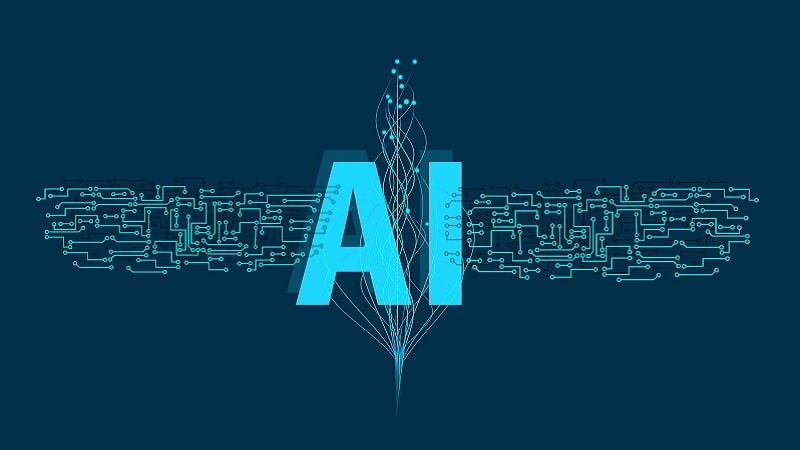
Both NASA and the Department of Commerce (DoC) reported use cases for artificial intelligence (AI) technology at double and triple the rate of the other 18 civilian CFO Act agencies who claimed to be using the emerging technology, a new report from the Government Accountability Office (GAO) finds.
According to the watchdog agency’s study, NASA had 390 AI use cases in fiscal year (FY) 2022 and DoC reported 285. The Department of Energy (DoE) came in third on the agency list, but only rang in 117 AI use cases for FY2022.
“Twenty of 23 agencies reported about 1,200 current and planned artificial intelligence (AI) use cases – specific challenges or opportunities that AI may solve. Three agencies reported not having uses for AI,” the Dec. 12 GAO report says. “Agency reported uses included analyzing data from cameras and radar to identify border activities, analyzing photographs from drones, and targeting of scientific specimens for planetary rovers.”
The watchdog found that most of the agencies’ reported AI use cases were in the planning phase and not yet in production. Only in about 200 of the 1,200 instances did agencies report that they were currently using AI tech.
GAO’s analysis of agencies’ inventories of use cases identified instances of incomplete and inaccurate data. Specifically, five agencies provided comprehensive information for each of their reported use cases while the other 15 had instances of incomplete and inaccurate data.
For example, GAO found that some inventories did not include required data elements, such as the AI life cycle stage or an indication of whether an AI use case was releasable or not. In addition, two inventories included AI uses that were later determined by the agencies to not qualify as AI.
“Without accurate inventories, the government’s management of its use of AI will be hindered by incomplete and inaccurate data,” the report says.
Agencies Failing to Meet Past Federal AI Guidance
The 103-page GAO report also notes that Federal agencies have not met all the requirements laid out in AI guidance as of April 2022. Previous Federal AI guidance and laws include documents such as the AI in Government Act of 2020 and Trump administration executive orders – like the Maintaining American Leadership in AI from 2019 and the Promoting the Use of Trustworthy AI in the Federal Government from 2020.
The report warns that “until all requirements are met, agencies can’t effectively address AI risks and benefits.”
The report finds that DoC and the General Services Administration (GSA) fully implemented selected requirements. Specifically, DoC created a plan to develop AI technical standards and GSA established the AI Center of Excellence.
Ten of 23 CFO Act agencies implemented all AI requirements specific to their agencies, the report notes. Twelve implemented some but not all, and one was exempt from the requirements. These requirements included preparing an inventory on the use of AI, planning for inventory updates, and planning for AI regulatory authorities.
While Federal agencies have taken initial steps to comply with AI requirements in previous executive orders and Federal law, GAO says more work remains to fully implement these. Specifically, the watchdog agency called on the Offices of Management and Budget (OMB) and Personnel Management (OPM) to fully implement selected requirements.
OMB has not yet developed guidance for the acquisition and use of AI, the report says, and OPM has not yet established or updated an occupational category for those employees performing AI work.
Additionally, the report says the White House Office of Science and Technology Policy (OSTP) did not communicate its designation of which agencies were expected to fulfill specific AI requirements.
“Addressing these requirements will improve agency identification, development, implementation, and oversight of AI,” GAO said.
The first-of-its-kind report has been in the works for more than a year, and GAO’s draft document was released before President Biden unveiled his AI executive order (EO) on Oct. 30. The watchdog agency stated on page 58 of the report that “we made updates to the background of our report with respect to the issuance of EO 14110, signed on October 30, 2023.” However, Biden’s recent EO was not included in the “Key AI Requirements from Federal Law and Guidance” section of the GAO report, which notes that it only tracked AI requirements as of April 2022.
GAO made 35 recommendations to 19 agencies. Specifically, GAO recommended that:
- Fifteen agencies update their AI use case inventories to include required information and take steps to ensure the data aligns with guidance;
- OMB, OSTP, and OPM implement AI requirements with governmentwide implications, such as issuing guidance and establishing or updating an occupational series with AI-related positions; and
- Twelve agencies fully implement AI requirements in Federal law, policy, and guidance, such as developing a plan for how the agency intends to conduct annual inventory updates and describing and planning for regulatory authorities on AI.
Of the 19 agencies, ten agencies agreed with the GAO recommendations; three agencies partially agreed with one or more recommendations; and four agencies neither agreed nor disagreed.
OSTP did not agree with its recommendation, stating that the draft report did not contain information on Biden’s recent AI EO and OMB’s related draft memorandum issued last month. The watchdog agency said that it did not include OMB’s draft governmentwide AI policy for Federal agencies because it is just a proposal at this time.
OMB agreed with one recommendation, stating that its draft guidance issued for public comment last month would implement governmentwide AI policy once finalized, but disagreed with the recommendation to develop a public roadmap for the agency’s policy guidance because President Biden’s recent AI EO supersedes this action.
GAO maintains that all the recommendations in the report are warranted.
